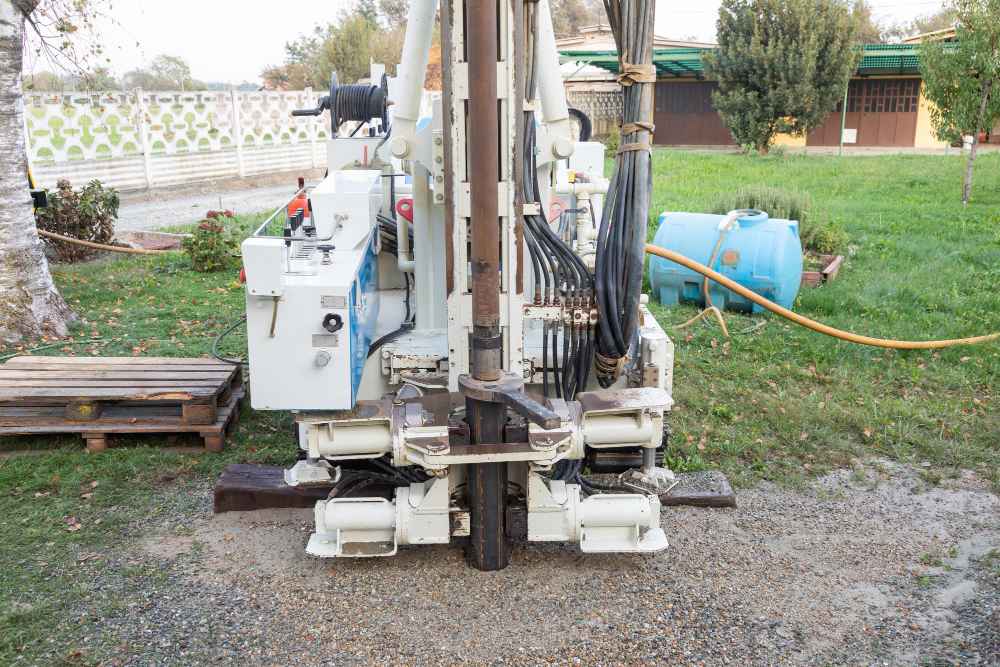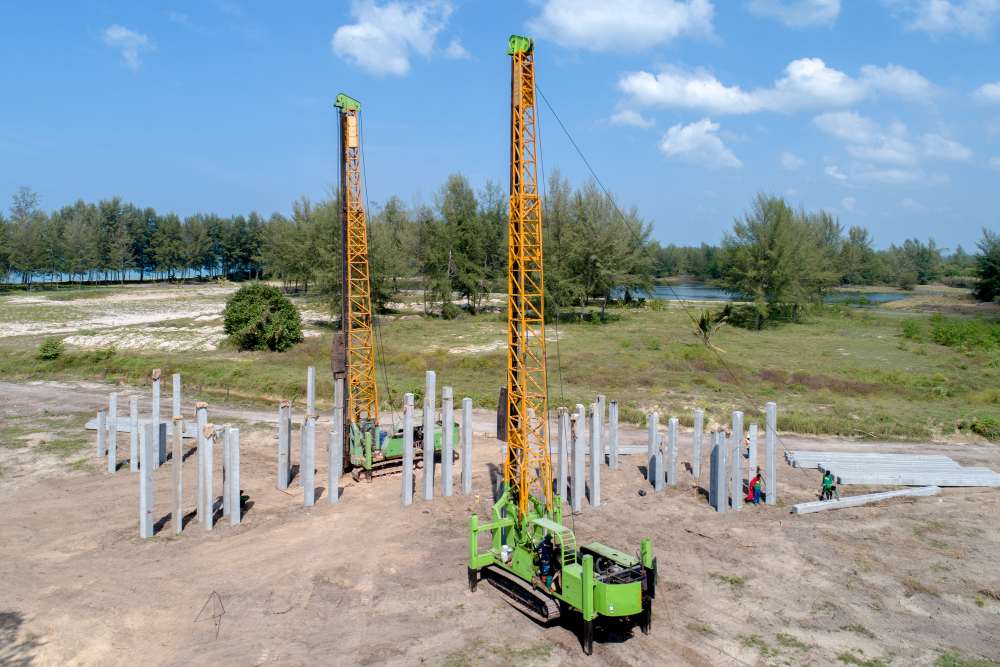Timber piling is a vital component in construction and civil engineering, providing foundational support for a wide range of structures, such as bridges, building foundations, docks, and retaining walls. Its durability, strength, and environmental benefits make timber a popular choice in various projects worldwide. This guide delves into the essentials of timber piling, exploring its classification and benefits to help you choose the right timber pile for different applications. Whether you are an engineer or a contractor, understanding the intricacies of timber piling is key to ensuring the stability and longevity of your construction projects.
What is Timber Piling? & Its Classifications
Timber piles are long, slender wooden rods that are driven into the ground. Typically, they are coated with a protective layer to deter insects from burrowing into them, thereby enhancing their longevity. These piles support buildings and infrastructure by transferring their loads to the deeper, more stable layers of soil.
Composition of Timber Piles
Timber piles are constructed from tree trunks with their branches and bark removed, utilising the natural strength and durability of the wood for support purposes. They are designed to bear a maximum load of 15 to 25 tons each, making them suitable for supporting structures that experience moderate loads rather than very heavy ones. Typically, timber piles range from 30 to 60 feet in length, although some specialised cases may call for longer lengths.
Two Mechanisms of Timber Piles
The functioning of timber piles relies on two main mechanisms.
- End Bearing – happens when the pile tip safely transfers the load to solid ground rock, ensuring stability of the structure.
- Friction – involves the resistance generated by the pile’s surface.
In many cases, both mechanisms operate together to ensure optimal support.
Quality and Classification of Timber Piles
Timber piles should be manufactured carefully to be free of defects and maintain high quality, ensuring they serve their purpose effectively. They must be straight and taper evenly. If a line drawn between the centre of the butt and the tip is extended to the pile, it shouldn’t go beyond the pile’s edge at any point. The quality of piles is assessed based on timber defects (like decay, splits, and twisted grain), as well as the size of knots, holes, and other imperfections. Timber piles are grouped into three classes based on timber quality and dimensions.
Class A Piles: These timber piles, used in construction, are of the highest quality and meet rigorous standards such as a minimum diameter of 14 inches at the butt end and 8 inches at the top. They are primarily used for bearing heavy loads, making them vital for critical infrastructure where failure could lead to serious safety or financial risks.
Class B Piles: These piles balance performance and cost-efficiency, featuring a minimum diameter of 12 inches at the butt end and 5 inches at the top. They are suitable for moderate loads and semi-permanent structures, offering reliable performance in most standard construction scenarios.
Class C Piles: These piles are the most cost-effective choice, designed for temporary or light-load applications. They have a minimum diameter of 10 inches at the bottom and 4 inches at the top. They are primarily used for temporary structures, formwork support, offering sufficient support when loads are relatively low.

Pros & Cons of Timber Piling
Pros of Timber Piling
Timber piles offer many benefits in construction. They are strong and can absorb shocks, which helps keep structures stable in different ground conditions. Timber piles are also affordable and simple to install or remove if necessary. Based on these advantages, they are a widely used option for many projects.
Cost-Effective: Timber is often the most affordable piling option, particularly in regions with plentiful timber supplies.
Sustainable: As a renewable resource, timber is an environmentally friendly choice for construction, especially when adequately treated.
Easy to Transport and Install: Being lightweight, timber piles require less heavy machinery and expertise for transport and installation.
Quick to Install: They can be driven into the ground rapidly, saving time on projects.
Corrosion-Resistant: Timber doesn’t corrode, making it suitable for use in saltwater environments.
Ideal for Waterfront Structures: Their low cost, ease of installation, and ability to withstand saltwater make them perfect for maritime construction like piers, jetties, and sea defences.
Cons of Timber Piling
Timber piles are useful in construction, but they have some downsides. They typically cannot bear as much weight as concrete piles. Also, they aren’t permanent, so they might not last forever.
Low Load-Bearing Capacity: Timber piles have limited strength and aren’t suitable for heavy structures.
Vulnerable to Decay: Wood is prone to rot and erosion, especially when above the water table or exposed to oxygen.
Susceptible to Insect Damage: Insect infestations can weaken the piles over time, shortening their lifespan.
Difficult to Install in Hard Ground: They can be damaged during installation in rocky or hard-packed soil, and aren’t suitable for driving through boulders.
Requires Frequent Maintenance: Due to their vulnerability to rot, insect damage, and other forms of decay, timber piles often need more maintenance.
Limited Lifespan: Untreated piles have a significantly shorter lifespan, especially when exposed to water and oxygen.
Placement Limitations: They need to be driven below the water table to prevent decay, which can increase project costs if the water table is deep.
Applications of Timber Piling
Timber piling may seem insignificant in construction, but it is essential for the safety and dependability of important buildings and structures. Here are some of its common uses:
Marine Construction
Timber piles are used to support structures like jetties, piers, docks, and waterfronts. They are easy to handle, flexible, and absorb impacts. Driven into the seabed or riverbed, they create a stable base that can withstand waves, boats, and water level changes.
Foundations
In building construction, timber piles provide deep support, especially in tough areas like coastlines, places with high water tables, or soft soil. They transfer the building’s weight to the ground that can support it better, making the building more stable.
Coastal Defense
Timber piles help protect shores from erosion and storm damage. They are used in building seawalls and barriers to slow down sea level rise, storms, and extreme weather conditions, shielding communities and nature.
Retaining Structures
They are used to build retaining walls and bulkheads to support land, prevent soil erosion, and stabilise slopes. Timber’s flexibility helps it absorb ground movements, reducing the chance of damage.
Infrastructure
In rural or less-developed areas, timber piles support small bridges, drainage systems, and culverts. They are a cheap, strong, and easy-to-install option for tough ground conditions.
Historic Restoration
Timber piles are used to fix and maintain old structures like wharves and piers. Using high-quality timber helps keep these sites looking and functioning like they did originally, preserving history for future generations.

Design Considerations for Timber Piling
Load and Bearing Capacity
When using timber piles in construction, it’s important to know how much weight they can support and how well the soil can hold them. Support capacity refers to the maximum weight a pile can carry, whereas bearing capacity pertains to the soil’s ability to support both the pile and the structure. Studies show that timber piles can hold up to 80 tons of load and usually have a bearing capacity of 25 tons. This makes them a dependable option for many construction projects.
Preserving Timber
To make sure timber piles last longer, they need proper protection. Treatments like creosote oil or chemicals such as chromate copper arsenate (CCA) or micronised copper quaternary (MCQ) help prevent decay and insect damage. Without proper protection, timber can weaken over time, risking structural failure and expensive repairs.
Pile Size
The size of the pile, including how long and wide it is, is very important so that it can reach firm soil and hold the expected weight. Most timber piles are about 8 to 14 inches in diameter and 20 to 120 feet long, according to the American Wood Council.
Soil and Water Conditions
Environmental factors like soil type and water levels affect how well timber piles work. In places with high water tables or unstable soils, piles are driven deeper into the ground. In dry or rocky soils, other foundation methods might be needed.
Conclusion
Understanding how timber piles work is important for keeping buildings stable and lasting a long time. Timber piles are a good, eco-friendly choice when chosen and cared for correctly. By understanding the basics in this guide, builders and engineers can make better choices that improve safety, durability, and eco-friendliness of various structures. Ultimately, a comprehensive knowledge of timber piling techniques and considerations can significantly contribute to the success of construction endeavours.


